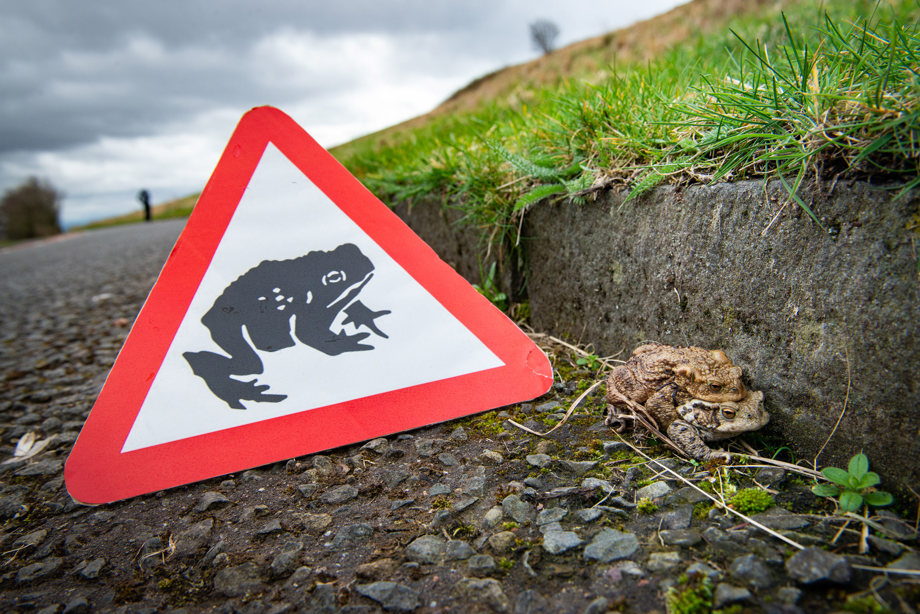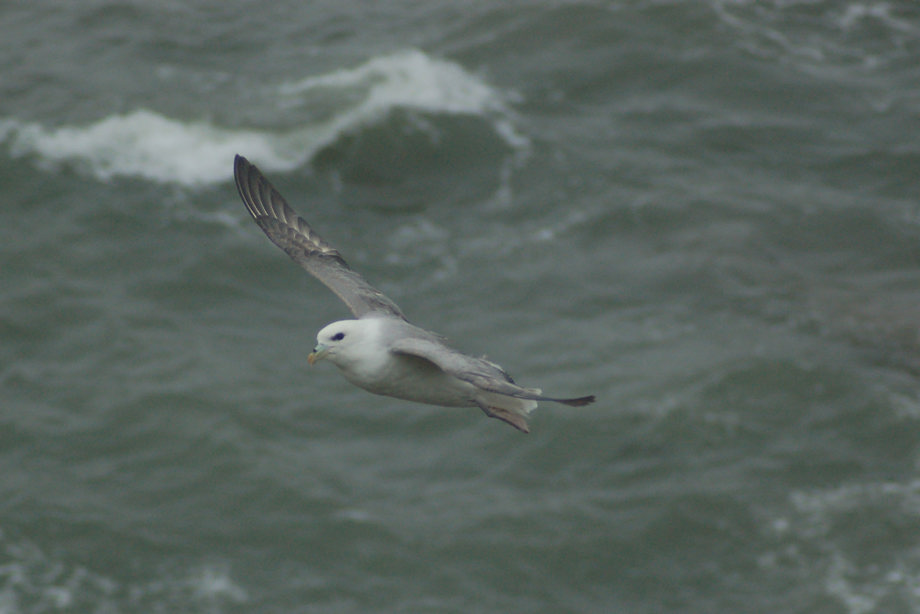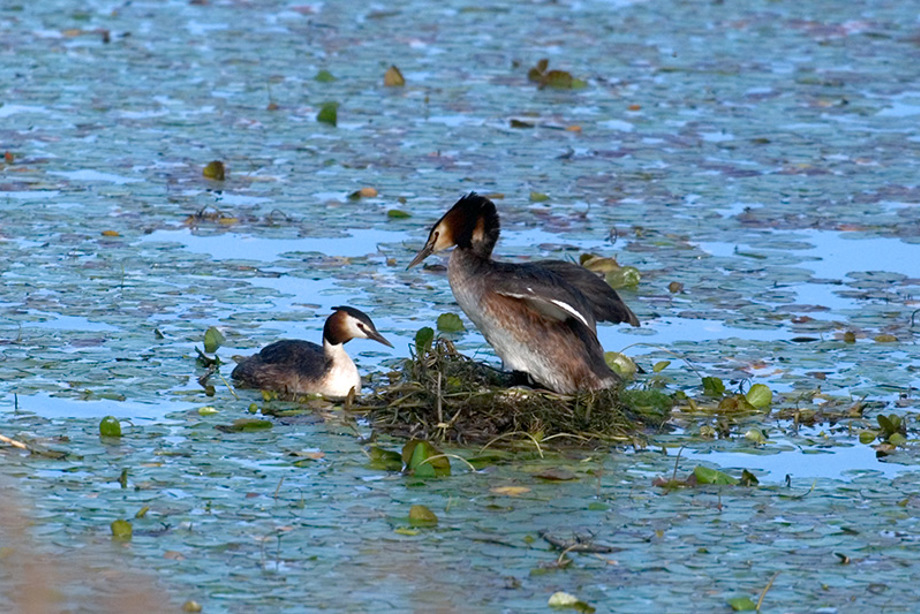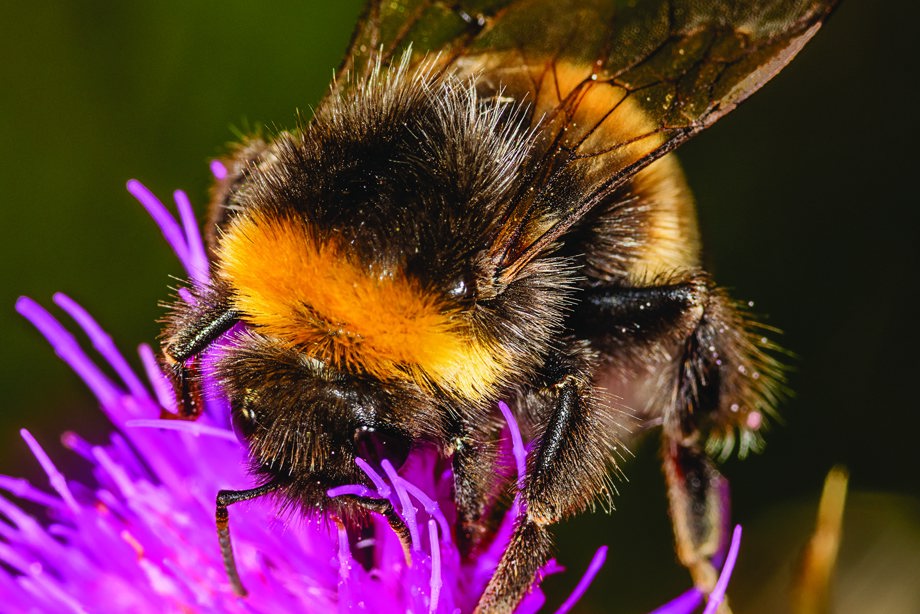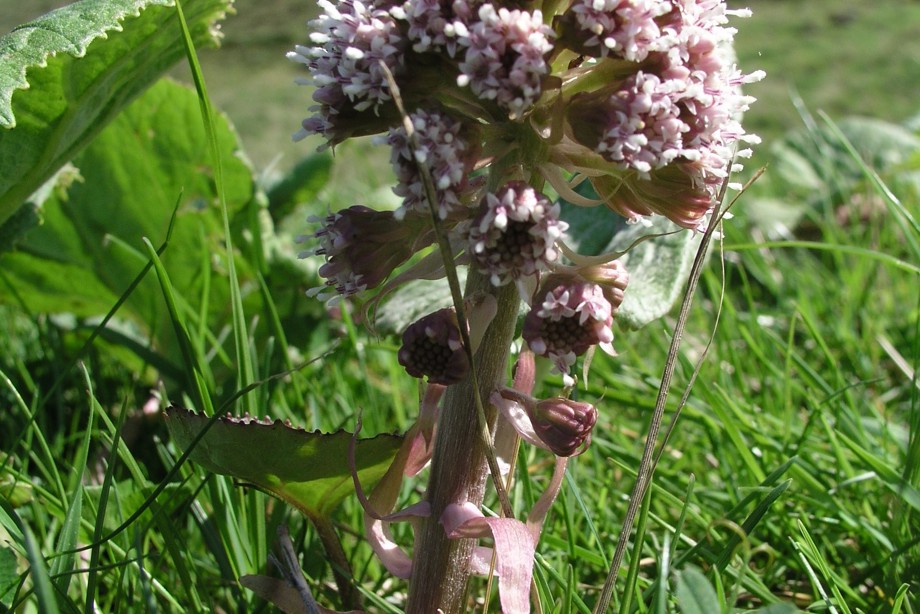We’ve got a spring in our step as Scotland’s landscape has bloomed with life and colour, ready to give you a wonderous sight on your next visit! From all the way up in Orkney, down to the Borders exciting wildlife can be spotted at this time of year – and we’re here to help you see it! Keep reading to discover what to look for, and when and where you will find it.
Toad migration
One of the highlights of spring in Holyrood Park is the yearly toad migration. Emerging from hibernation on the slopes of Arthur’s Seat, thousands of adult toads make their way down to their ancestral breeding ground at Dunsapie Loch. Toads are able climbers and can find their way over the kerb of Queen’s Drive. However, our Ranger Service Team give them a helping hand by installing toad ladders in the drains so they can escape, should they fall in. We also keep the road closed to vehicles during this period and will assist any toads that have become lost on their way by gently placing them into the water. Make sure you don’t miss out on this incredible journey!
Fulmars
One of the more surprising residents at Holyrood Park are fulmars, which return to Salisbury Crags each year. Typically found nesting on sea stacks, it is odd to find them in a city. Fulmars in the United
Kingdom undertake extremely long journeys to forage for food, travelling nearly 4000 miles in a two-week period to the mid-Atlantic and back. You can also spot these incredible birds on the cliffs around St Andrews Castle.
Great Crested Grebes
Linlithgow Loch, by Linlithgow Palace, is home to a number of pairs of Great Crested Grebes. These striking birds perform an elaborate, spectacular mating display that involves bobbing their heads, exchanging gifts of water weeds, and skipping over the surface of the water! Keep an eye out for them around the reed beds where they build their nests. We ask that dog walkers are particularly mindful and keep their dogs away from the reed beds at this time of year.
Image credit Graham Checkley
Great Yellow Bumblebees
Very late to emerge at the end of spring will be one of the UK’s rarest bumblebees, the Great Yellow Bumblebee. Having declined hugely in its range across Britain, it is now almost entirely confined to the very north coast of Scotland, Western Isles, and Orkney archipelago. One of the best places to see them is around the Ring of Brodgar. Look out for the queens emerging in late May.
Butterbur
Growing commonly next to watercourses is butterbur, identified by its very broad leaf- which it gets its name from. Tough and high in water content, it was used to wrap butter and keep it fresh, long before the invention of clingfilm. It is unusual in that it blooms before it grows its large leaf, a feature known as ‘hysteranthous’ in botany. Keep an eye out for its clusters of small white and pinkish flowers by any of our sites with water, including Doune Castle, Linlithgow Peel and Caerlaverock Castle.

